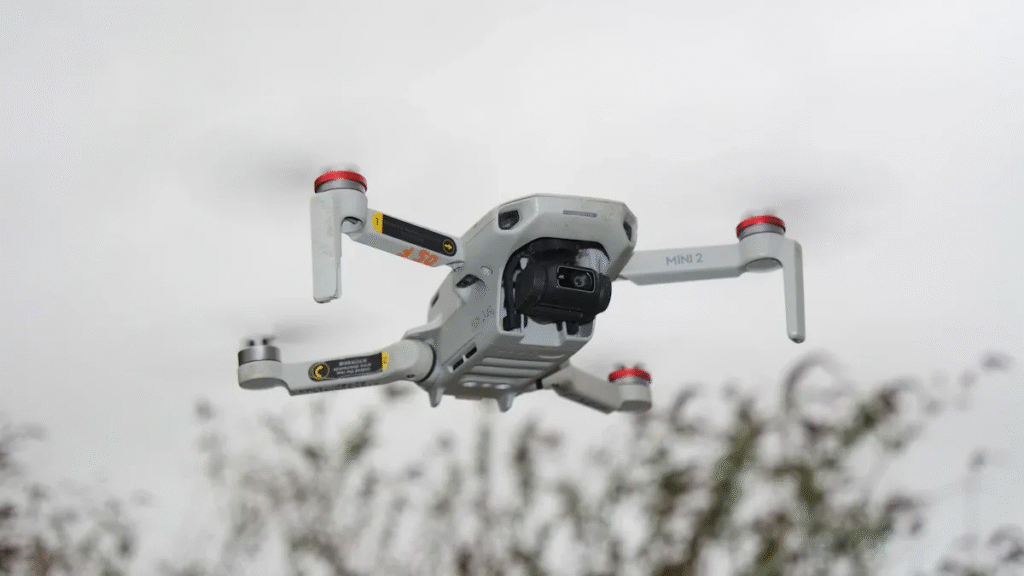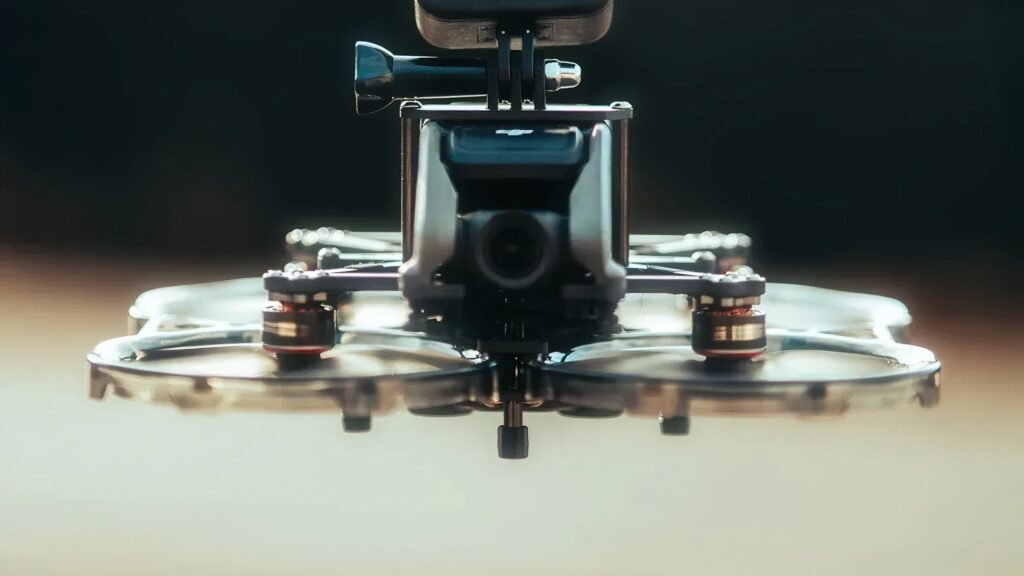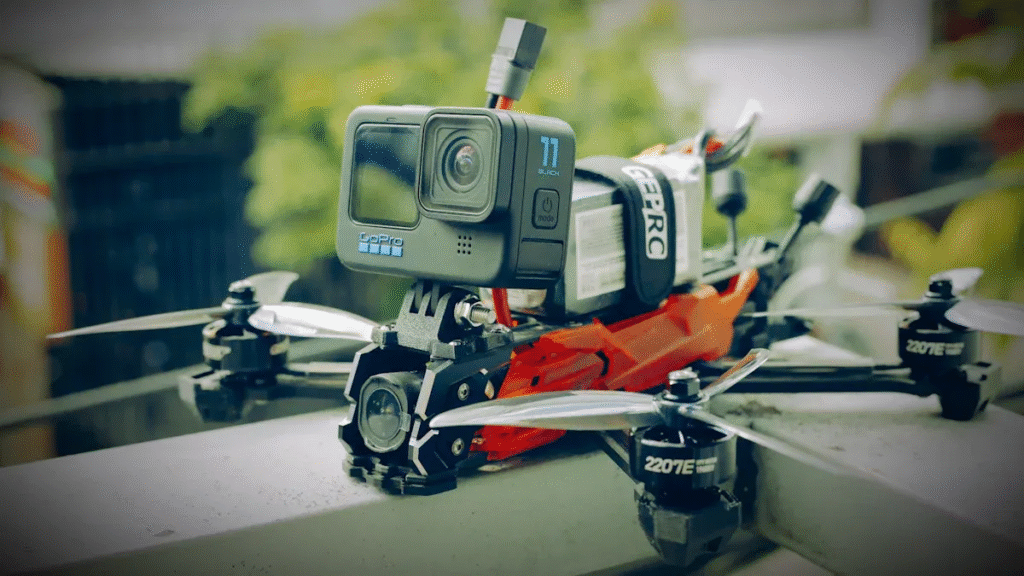If you want to boost the speed of your DC drone motor, increasing the voltage stands out as the most direct method. You can also explore other ways, each with unique benefits and drawbacks. Always make sure your upgrades match your drone’s design and limits. Safety comes first. Retek Motion supports responsible DIY work and encourages you to take every precaution when making changes.
Key Takeaways
- Increase your drone motor speed safely by raising voltage within the motor’s limits to avoid damage and overheating.
- Use PWM control for precise and efficient motor speed adjustment while reducing heat and power loss.
- Reduce the motor load by removing extra weight and optimizing propeller size to improve speed and battery life.
- Upgrade motors and controllers carefully, matching specifications to your drone for better speed and durability.
- Always test upgrades safely, monitor motor temperature, and maintain your drone regularly to ensure long-lasting performance.
Methods Overview

Boosting the speed of your DC drone motor involves several practical methods. Each approach offers unique benefits and can be performed with basic tools and knowledge, making them suitable for most toy grade drones.
Increase Voltage
Raising the voltage supplied to your DC drone motor increases its speed almost proportionally. For example, small coreless motors often gain about 1000 RPM for every additional volt. However, higher voltage also raises current, which leads to more heat and faster brush wear.
- Running motors above their rated voltage can shorten lifespan due to increased heat and mechanical stress.
- Brush wear and bearing life decrease as RPM and current rise.
- Larger diameter motors may handle higher voltage better because of more robust construction.
⚠️ Always check your drone’s voltage limits to avoid damaging the motor or electronics.
Use PWM Control
Pulse Width Modulation (PWM) lets you control motor speed efficiently by rapidly switching the supply voltage on and off.
- PWM provides precise speed control by adjusting the duty cycle.
- This method reduces power loss and heat compared to analog voltage control.
- In toy grade drones, PWM circuits are lightweight and cost-effective.
- H-bridge circuits with PWM allow you to control both speed and direction.
Reduce Load
Reducing the load on your DC drone motor helps it run faster and more efficiently.
- Lower load decreases power consumption and heat generation.
- Heavy loads increase current draw, which shortens runtime and motor life.
- Keeping the load within recommended limits ensures optimal performance and longevity.
Motor Upgrades
Upgrading to a higher quality or larger DC drone motor can deliver more speed and durability.
- Larger motors often have better brushes and commutators, which extend lifespan.
- Select motors designed for higher RPM if you want more speed.
- Always match the new motor’s specifications to your drone’s electronics.
Propeller Optimization
Choosing the right propeller size and material maximizes efficiency and speed.
- High KV motors work best with smaller propellers for fast flight.
- Low KV motors suit larger propellers for more torque.
- Matching motor KV and propeller size prevents inefficiency and overheating.
- Testing different combinations helps you find the best setup for your drone.
🛠️ These methods are accessible for most hobbyists. You can achieve noticeable improvements in your drone’s performance with careful adjustments and basic equipment.
Step-by-Step Methods
Voltage Adjustment
Increasing the voltage supplied to your DC drone motor can boost its speed. You should follow these steps to ensure a safe and effective upgrade:
- Check Motor and Electronics Ratings
Review your drone’s manual or the motor label for maximum voltage and current ratings. Never exceed these limits. - Select a Compatible Power Source
Choose a battery that matches the required voltage. For example, if your drone uses AA batteries, consider switching to a rechargeable Li-ion pack with a similar or slightly higher voltage. - Install the New Battery
Secure the battery in the drone’s compartment. Use proper connectors and ensure polarity matches. - Test the Motor
Power on the drone and observe the DC drone motor. Listen for unusual noises and check for excessive heat after a short run.
⚠️ Safety Tip:
Always monitor temperature and current draw during initial tests. Overvoltage can cause overheating or permanent damage.
If you need help selecting batteries or voltage regulators, Retek Motion offers expert advice and reliable components.
PWM Setup for DC Drone Motor
Pulse Width Modulation (PWM) gives you precise control over motor speed. Setting up PWM involves both hardware and software steps:
Materials Needed:
- Arduino Uno or similar microcontroller
- L293D dual H-bridge motor driver module
- Jumper wires
- Two DC motors (if testing outside the drone)
- USB cable
- Connect the power supply to the motor driver and motors.
- Wire the control pins (IN1, IN2, IN3, IN4) from the driver to the Arduino’s digital pins.
- Attach the DC drone motor to the driver’s output terminals.
- Plug the Arduino into your computer using a USB cable.
- Upload a PWM control program to the Arduino, selecting the correct board and port.
- Use the Arduino’s PWM pins to adjust motor speed and direction through the H-bridge.
- Ensure the motor controller matches your DC drone motor type (brushed or brushless).
- Confirm the controller’s voltage and current ratings meet your drone’s requirements.
- Check that the controller interface is compatible with your control platform.
💡 Pro Tip:
Use a breadboard to test your PWM setup before installing it in your drone. This helps you catch wiring or programming errors early.
Retek Motion can recommend compatible controllers and provide technical support for PWM integration.
Load Reduction Techniques
Reducing the load on your DC drone motor helps it spin faster and last longer. Here’s how you can achieve this:
- Remove Unnecessary Weight:
Take out extra accessories or decorations that add weight but do not improve flight. - Optimize Propeller Size:
Use smaller or lighter propellers to reduce the force required from the motor. - Check for Mechanical Resistance:
Inspect the motor and propeller shafts for dirt or misalignment. Clean and lubricate moving parts as needed. - Balance the Drone:
Make sure the drone’s weight is evenly distributed. An unbalanced drone forces the motor to work harder.
🛠️ Note:
Reducing load not only increases speed but also improves battery life and motor longevity.
If you need lightweight components or balancing tools, Retek Motion supplies a range of options for hobbyists.
Upgrading Motor and Controller
Upgrading to a higher-performance motor and controller can significantly increase your drone’s speed and reliability. Follow these steps for a successful upgrade:
- Select the Right Motor:
- Choose between brushed (simple, budget-friendly) and brushless (efficient, durable) motors.
- Match the motor size and weight to your drone’s frame.
- Pick a motor with a KV rating that fits your desired speed and propeller size.
- Choose a Suitable ESC (Electronic Speed Controller):
- Ensure the ESC’s current rating exceeds the motor’s maximum draw.
- Match the ESC’s voltage range to your battery.
- Decide between BEC (with voltage regulation) and Opto (without) types based on your drone’s power setup.
- Install the Components:
- Solder wires and connectors, using heat shrink tubing for insulation.
- Secure the ESC and motor to the frame with zip ties or mounting hardware.
- Connect ESC signal wires to the flight controller, following the correct motor order.
- Configure and Test:
- Use ESC programming software to set motor direction and other parameters.
- Calibrate the flight controller for stable operation.
- Test all connections before powering on.
Compatibility Notes:
- Always verify that the new motor and ESC fit your drone’s frame and power system.
- Check firmware compatibility for the flight controller.
⚠️ Caution:
Incorrect wiring or mismatched components can damage your drone. Double-check all connections and ratings.
Retek Motion provides high-quality motors, ESCs, and flight controllers, along with expert installation guides.
Propeller Selection
Choosing the right propeller is crucial for maximizing speed and efficiency. Consider these factors:
- Diameter and Pitch:
Larger diameters increase thrust, while higher pitch boosts speed. For most toy drones, 8–9 inch propellers work well. - Material and Series:
Select durable materials like reinforced plastic. E-series propellers offer good performance at low speeds. - Thrust-to-Weight Ratio:
Aim for a ratio of at least 3:1 for stable flight. Racing drones may require higher ratios. - Motor and ESC Matching:
Ensure the propeller size matches your motor’s KV rating and the ESC’s current capacity. - Test Different Combinations:
Try various propeller sizes and pitches to find the best balance of speed, thrust, and battery life.
✈️ Tip:
Always test new propellers in a safe area. Monitor motor temperature and drone stability during flight.
Retek Motion can help you select and test propellers for your specific drone model.
Safety and Risks

Overheating and Damage
When you modify your drone for higher speed, you increase the risk of overheating and damage. Pushing your DC drone motor beyond its rated voltage or load can cause the windings to overheat. Excessive heat may melt insulation, warp plastic parts, or even start a fire. Overcurrent can burn out the motor or damage the electronic speed controller (ESC). You should always monitor the temperature of the motor and ESC during and after flights. If you notice a burning smell or the motor feels too hot to touch, stop immediately and let everything cool down.
⚠️ Tip:
Use an infrared thermometer to check motor temperature after upgrades. Keep the temperature below 60°C (140°F) for most toy grade motors.
Warranty Concerns
Upgrading or modifying your drone often voids the manufacturer’s warranty. Most brands do not cover damage caused by user modifications. If you replace the motor, change the battery, or alter the electronics, you accept full responsibility for any failures. Before making changes, review your drone’s warranty policy. Decide if the performance boost is worth the potential loss of coverage.
- Check the warranty terms before starting any upgrade.
- Keep original parts in case you need to restore the drone for warranty service.
- Contact the manufacturer if you have questions about specific modifications.
Safe Testing Practices
Safe testing protects both you and your drone. Always test upgrades in a controlled environment. Use a clear, open area away from people, pets, and obstacles. Secure the drone on a flat surface before powering up. Start with short, low-power tests to observe how the drone responds. Monitor battery voltage, current draw, and motor temperature during each test.
- Wear safety glasses when testing new propellers or motors.
- Keep a fire extinguisher nearby when working with batteries or electronics.
- Record test results to track changes and spot problems early.
🛡️ Note:
Responsible testing ensures your drone stays reliable and safe after modifications.
Performance Tips
Balancing Speed and Control
When you increase your drone’s speed, you must also focus on keeping it stable and easy to fly. Toy grade drones rely on electronic stabilization to stay balanced, especially at higher speeds.
The basic quadcopter configuration is inherently unstable, requiring electronic stabilization to maintain control, especially at increased speeds. A flight controller acts as the drone’s ‘brain,’ using accelerometers and sensors to detect motion and adjust motor speeds accordingly. This active control is essential because human reflexes are too slow to stabilize small drones manually. The flight controller also manages channel mixing to balance throttle and directional commands, ensuring stable flight. Proper component selection, such as flight controllers with built-in ESCs and receivers, further supports maintaining control while increasing speed.
You should always check that your flight controller and electronic speed controllers (ESCs) match your upgraded setup. If you notice your drone drifting or wobbling, recalibrate the sensors and review your component choices. For advanced upgrades or troubleshooting, you can reach out to Retek Motion for expert advice.
Battery Life Management
Faster motors and higher speeds drain your battery more quickly. To get the most out of each flight, choose batteries with higher capacity but similar weight. Monitor your battery voltage during flights and avoid running it down completely. Carrying extra batteries lets you enjoy longer flying sessions without overworking a single pack. If you notice your drone losing power or the DC drone motor slowing down, land immediately to prevent battery damage.
- Use lightweight, high-capacity batteries for longer flights.
- Recharge batteries fully before each session.
- Store batteries in a cool, dry place to extend their lifespan.
Motor Longevity
Proper care keeps your upgraded motors running smoothly for many flights. After each flight, clean your drone to remove dust and debris. Inspect the motors for signs of wear, such as unusual noises or reduced performance. Regular maintenance helps you catch problems early and avoid costly repairs.
- Clean the motors and propellers after every flight.
- Check for cracks, dents, or loose parts.
- Lubricate moving parts as recommended by the manufacturer.
- Monitor for overheating, vibration, or changes in thrust output.
- Reduce load and ensure good ventilation if you notice any issues.
If you ever feel unsure about maintenance or repairs, consult Retek Motion or a professional technician. Taking these steps will help you get the best performance and longest life from your DC drone motor.
You can safely boost your drone’s speed by increasing voltage within the motor’s rated limits or using electronic speed controllers with PWM for precise control. These methods manage electrical power efficiently and reduce mechanical stress. Always match motor size and voltage to your drone’s needs, and inspect all parts before flight. For expert advice, explore trusted resources or connect with specialists like Retek Motion. Share your upgrade experiences or questions in the comments—your insights help the community grow! 🚁



